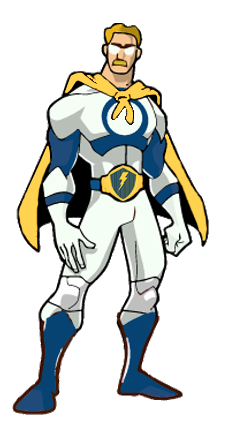

Metal is insignificant when it comes to attracting lightning strikes. Height, shape, and isolation are the leading factors in controlling where lightning will strike. However, touching or standing near long metal object such as fences, railings, bleachers, or vehicles is extremely unsafe. If lightning strikes, a metallic object can conduct electricity a good distance way – sometimes over 100 yards – and electrocute a person.
Not exactly. The metal roof and metal sides of a vehicle somewhat protects a person from lightning. It is not the vehicle tires, but instead the conductive quality of the frame that diverts the lightning energy to the ground. The car acts like a faraday cage. Because fiberglass is a poor conductor of electricity, vehicles made with this material are not as safe. A metal shelled vehicle does provide protection; however, the best safety measure during a severe thunderstorm is to park under a bridge or seek shelter inside.
Lightning is broadly categorized in three main types: cloud-to-ground, intra-cloud (inside the thunderstorm itself), and cloud-to-cloud. In addition, there are around 15 recognized observational variants that include heat lightning, dry lightning, and ball lightning. Check out our lightning page to read about the numerous lightning variants and what they are.
Lightning rods do not attract lightning; they provide a conductive path for an existing electrical charge that is already in the vicinity. The reason buildings place lightning rods around them is not to draw lightning. But instead, the lightning rod will be more likely to take the strike than the building itself in the event it strikes. This safely transfers that electricity to ground. Otherwise, the lightning strike could create a building fire, damage electrical equipment, or injure people.
Yes! Dry lightning happens without rain nearby. There is also positive lightning which is also referred to as a “Bolt from the Blue.” It can travel up to 10 miles away from a thunderstorm’s rain core. That is why you may have heard of the saying, “When thunder roars, go indoors.” If you are within range to hear thunder, then you are in an area that can be struck by lightning.
The sad truth is more than 85% of forest fires are started by humans–whether it be mistakenly leaving a campfire untended, tossing out a cigarette butt, or intentional acts of arson.
Lightning strikes cause very few wildfires. Lightning is 5x hotter than the surface of the sun. But if it strikes the ground, it is more like to fuse dirt and clays into silica’s due to the extreme heat instead of creating a fire. The same goes for a tree if it is struck by lightning. The tree will likely sustain damage from the strike but no fire will break out. It’s not that often that conditions are dry enough and the surrounding materials flammable enough to start a fire. It does happen, but people are responsible far more often than lightning.
Typically, hurricanes do not produce lightning; and when they do, it is not as much lightning as storms that form 30 to 60 degrees north or south of the equator. Observations of hurricane Georges’ lightning activity found it was about 10 times less than that found in a typical thunderstorm.
Hurricanes are comprised of spiral bands of convective clouds generally not associated with significant lightning. They contain only a small amount of supercooled water above the melting level due to relatively low vertical velocities. In other words, hurricanes lack vertical winds that cause water and ice to rub together reducing the chance for charge separation—lightning—to occur.
Lyons and Keen generalized about lightning morphology in tropical storms and proposed the following:
- There is little lightning within the inner portions, including the eyewall, of mature, well-organized hurricanes. — read more about eyewall lightning activity here
- Lightning occurs within the convective elements of the outer bands of tropical storms and hurricanes during most stages of the system’s life cycle (there may be considerable storm to storm variability).
- If concentrated burst(s) of lightning (often with relatively low stroke rates) occur within about 100-150 km of the center, this may well indicate further intensification, beginning within the next 6-12 h.
Lyons, W. A., and C. S. Keen, 1994: Observations of lightning in convective supercells within tropical storms and hurricanes. Mon. Wea. Rev., 122, 1897–1916.
Cumulonimbus clouds. These are the type of cumulus clouds associated with thunderstorms and heavy rains. Typically formed beneath 20,000 ft and relatively close to the ground. Sometimes they are referred to as thunderheads due to their mushroom like shape. These clouds need humidity and warmth to make those warm updrafts that create the energy needed for lightning to develop.
A volcanic eruption produces fine particles of ash and sometimes ice. Friction between the ash and gases from the eruption produces static electricity. Sometimes called dirty thunderstorms due to moist convection and ice formation that drive plume dynamics, can trigger volcanic lightning. The various mechanisms behind the phenomena are called ice charging, frictional charging, fractoemission, and radioactive charging. Volcanic lightning is hard to study because a lot of volcanos are remotely located and infrequently erupt.
Lightning can strike anywhere on the earth including water. Large bodies of water, however, lack the geographic features that create conditions favorable to lighting; thus, lightning is less frequent over the earth’s oceans than it is over its landmasses. Although it is rare to find lightning striking deep oceans, you can find it near waters just off the coast where heat and updrafts are favorable to the formation of storms. Cumulonimbus clouds, which form thunderstorms, require moisture, unstable air mass, and a lifting force (heat) in order to form. Where these conditions are met, whether over land or water, thunderstorms and lightning are likely to form.
Ironically, one of the largest lightning hot spots on earth is located at a lake. Lake Maracaibo in Venezuela has earned a place in the Guinness Book of World Records for the highest concentration of lightning with 250 lightning flashes per square kilometer each year. One area where the mouth of the river empties into the lake is known for its “everlasting lightning storm.” Known as Catatumbo lightning, it produces mostly cloud-to-cloud lightning that forms 5-kilometer high voltage arcs 140-160 nights a year, 10 hours a night, and as many as 280 times an hour! The lightning at Lake Maracaibo is so bright and consistent it has guided sailors for centuries and is known as the “Beacon of Maracaibo.” All the required factors to produce lightning storms are found here: irregular terrain, mountains, curving coastlines, specific wind patterns as well as heat and humidity. Luckily, not all bodies of water have the geological features this conducive for lightning.
Visible light is a portion of the electromagnetic spectrum that humans can see. When all the visible wavelengths are combined, the color of light is white. Shorter wavelengths produce violet colors and longer wavelengths produce red. As lightning passes through the atmosphere, air molecules will scatter the wavelengths of visible light. Shorter wavelengths scatter more than longer wavelengths. As light travels through more air, the shorter wavelengths are depleted until light will appear reddish. So, the more air between you and the light source, the redder an object appears.
Lightning flashes can reach temperatures of 30,000 K. At this temperature objects emit a brilliant white light. Observers close to a lightning strike or in an area free of pollutants and dust will may observe white lightning. The farther one is from the lightning strike, the amount of pollutants or particles in the air, types of atmospheric gases, and moisture can cause lightning to appear blue, purple, yellow, orange, or red.
Photographs of lightning can be affected by the type of film, camera, exposure, and white exposure used and may not be representative of the atmospheric conditions when the photograph was taken.
Air is made up of all sorts of different gasses, particles and moisture. As a result, air is irregular and uneven so when a lightning channel begins to form, it takes the path of least resistance.
That’s a great question! It’s quite possible you’ve seen a lightning activity map on the news or weather channel at some point. If you have, you likely saw that lightning activity is often denser closer to the equator and over land masses. You will see virtually no lightning in the far North and far South. When we say far North and South, we’re talking the North Pole and Antarctica. These places do not (often) see lightning because the weather there is not conducive to creating lightning. Thunderclouds and storms are caused by rapid temperature changes and clashing fronts. The far reaches of our globe don’t often see those changes in temperatures and therefore, very little lightning. To learn more about this and see the maps mentioned above, NOAA is a great resource to check out. Here is a link to their latest lightning data.

